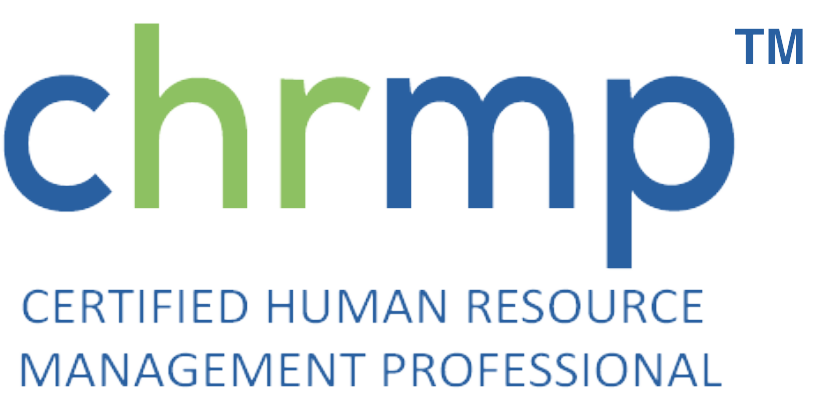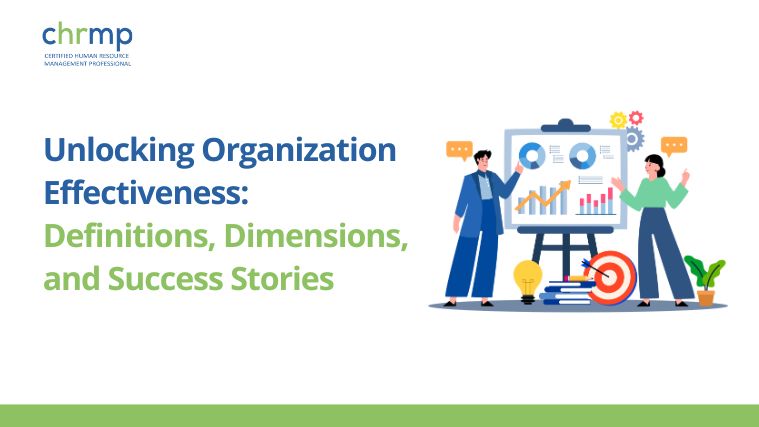Talent management is an important function of any business that wants to achieve success in its arena.
Navigating this ever-changing landscape of human resources can be tricky sometimes. But, attracting, developing, and retaining the best and talented employees of your organization need not seem like a sticky wicket anymore.
In this blog, we will explore the definition, importance, best practices and some practical tips to develop your own talent management strategy.
Our goal is to provide you with the insights and tools you need to build a talented and motivated workforce that drives your organization towards success at a sustainable pace.
So let’s dive right into the exciting world of talent management that might just be what your company needs to ensure success!
What is Talent Management?
The process of attracting, developing, and retaining the best employees for an organization through the use of suitable strategies is called talent management.
It involves identifying and nurturing individuals who possess the skills, knowledge, and potential to contribute to the success of the organization in the long run.
Talent management encompasses a range of activities like recruitment, performance management, career development, succession planning, and employee engagement.
The goal of talent management is to create a high-performing and skilled workforce that is motivated, engaged, and aligned with the organization’s objectives.
By investing in talent management, organizations can build a competitive advantage, increase employee satisfaction, engagement and retention at the same time lower absenteeism, job abandonment, frequent replacement costs, and reap loyalty benefits to improve their financial metrics and profits that drive business growth.
Why is it Important?
Talent Management is important for businesses because it helps them identify and nurture individuals with the skills, knowledge, and potential to contribute to the organization’s long and short term success.
Talent management includes various activities, such as recruitment, performance management, career development, succession planning, and employee engagement.
By investing in talent management, organizations can build a skilled, loyal and motivated workforce which is aptly aligned with the organization’s strategic objectives. This can lead to improved business performance and reduced employee turnover rate.
10 Best Talent Management Practices
Elaborated below is a brief overview of some of the best talent management practices that organizations can apply:
1. Clear Definition of Goals and Metrics:
Defining clear goals and performance metrics is the first step for tracking progress and measuring success in talent management drives.
This involves setting specific, measurable, achievable, relevant, and time-bound (SMART) objectives which are aptly aligned with the organization’s business strategy.
Performance metrics can include employee engagement, retention rates, talent acquisition costs, replacement costs and leadership effectiveness.
By keeping track of these metrics you can identify areas for improvement and help the company make informed, data-driven decisions that support talent management goals.
2. Create a Strong Employer Brand:
A strong employer brand helps in attracting, engaging and retaining top talent in the company which supports business growth.
Creating a compelling employee value proposition which differentiates the organization from competitors and appeals to potential candidates while also informing them on organizational values, cultures, vision and objectives.
3. Create a Diverse Candidate Pool:
Creating a diverse candidate pool is essential for promoting inclusion of diverse ethnic groups and genders in the area where the company is operating while this also increases access to top talent in the industry.
Developing recruitment strategies that target a wider range of candidates, including those from underrepresented ethnic groups is called for.
Employers can partner with diversity-focused organizations, participate in job fairs, and use social media and other digital platforms to reach diverse and wider range of candidates.
Such a diverse pool helps enhance innovation, creativity, engagement, and promotes a culture of inclusion.
4. Focus on the employee experience:
The whole employee experience includes all interactions an employee has with the company, from the recruitment process to their exit interview.
The focus should be on creating a positive and supportive work environment that values and acknowledges employees’ contributions, provides opportunities for growth and development, and offers work-life balance.
Soliciting feedback from employees, providing adequate resources and tools, and recognizing and rewarding employee achievements are ways to manage talent retention in the organization and by not being too overzealous about replacement parameters.
5. Encouragement of learning and development programs:
Today’s rapidly changing business scape demands that learning and development programs for employees be made an essential parameter for staying competitive, where talent acquisition and retention is concerned.
Employers should encourage employees to continuously develop their skills and knowledge through training programs, coaching, and other learning opportunities.
This benefits the individual employee and the organization to improve its capabilities and stay ahead on the winning curve.
6. Encourage a culture of high performance:
A culture of high performance should be established in the organization where employees are motivated to perform to the best of their ability and be accountable for the results.
This can be achieved by offering incentives, recognition and appropriate compensation for goals achieved and objectives met for top performers.
A high-performance culture fosters innovation, creativity, collaboration, and a sense of shared responsibility in the organization’s success.
7. Create an organized onboarding process:
Integrating new employees into the organization and helping them to become productive members of the team is called the onboarding process.
An organized onboarding process should include orientation to the company’s mission, values, culture, and policies, as well as training on job duties and expectations.
Introductions to colleagues and other key stakeholders, as well as ongoing support and feedback to ensure a smooth transition is called for in an organized onboarding process.
8. Develop succession planning:
Succession planning is the process of identifying and developing future leaders within the organization to navigate leadership transitions without business disruptions.
It involves identifying key positions, assessing the skills and competencies required for those positions, and creating batches of internal candidates in the pipeline, who could fill those positions as when required.
Succession planning ensures that the organization has a pipeline of talented leaders to take on important roles, and also helps to retain top performers by offering them a clear path for career advancement.
9. Clear and Effective Communication:
Effective communication is essential for building trust, fostering collaboration, and achieving shared goals.
Employers should ensure transparency in communication and dealings with the workforce, and that employees have ready information from managers, that they need to perform their jobs effectively.
Regular team meetings, one-on-one discussions, and the use of technology tools such as email, instant messaging, and video conferencing can be used to connect with the employees.
10. Diversity and Inclusion:
Employers should create a culture that values and respects individual differences, promotes equality of opportunity, compensation and fair treatment for all.
This can be achieved by actively recruiting and promoting a diverse workforce, providing training devoid of all kinds of bias, such as gender, religion, regional and cultural, and offering support and resources for employees from underrepresented groups.
5 Tips to Develop a Solid Talent Management Strategy for Your Company
Here are five tips for developing a solid talent management strategy for your company:
1. Identify key roles and competencies: Start by identifying the key roles in your organization and the competencies required for success in each role. This will help you to develop targeted recruitment, training, and development programs that align with your business goals.
2. Build a strong employer brand: A strong employer brand is necessary for attracting and retaining top talent. This includes communicating your company culture, values, and mission, as well as highlighting the benefits of working for your organization.
3. Create a culture of learning and development: Encourage continuous learning and development by offering training and development opportunities, mentoring and coaching programs, and career development paths. This will help to retain top talent and ensure that your organization has the skills and knowledge required to stay competitive.
4. Use data-driven insights: Use data to make informed decisions about your talent management strategy. This includes analyzing workforce data to identify trends, measuring employee engagement and satisfaction, and tracking the success of recruitment and retention programs.
5. Foster diversity and inclusion: Ensure that your talent management strategy includes initiatives to promote diversity and inclusion, such as diverse recruitment practices, bias training, and employee resource groups. This will help to create a workplace culture that values and respects individual differences and promotes equality of opportunity.
Talent Management Model
Talent management is a strategic approach to attracting, developing, and retaining talented individuals within an organization. It involves the implementation of various processes, practices, and systems to identify, nurture, and utilize the skills and potential of employees. While there are several talent management models and frameworks, here is a general overview of a commonly used model:
1.Attracting Talent
This stage involves sourcing and attracting talented individuals to the organization. It includes activities such as employer branding, recruitment, and selection processes to identify potential candidates who possess the desired skills and competencies.
2. Selecting Talent
Once a pool of potential candidates is identified, the organization uses various assessment methods (interviews, tests, assessments) to select the most suitable individuals for the available positions. The focus is on identifying candidates who align with the organization’s culture, values, and job requirements.
3. Developing Talent
This stage involves providing learning and development opportunities to enhance the skills, knowledge, and capabilities of employees. Development initiatives can include training programs, mentoring, job rotations, coaching, and performance management systems. The aim is to help employees reach their full potential and acquire the necessary competencies to excel in their roles.
4. Retaining Talent
To retain talented individuals, organizations need to create a supportive and engaging work environment. This may involve offering competitive compensation and benefits, providing opportunities for growth and advancement, recognizing and rewarding performance, promoting work-life balance, and fostering a positive organizational culture.
5. Succession Planning
Succession planning ensures a smooth transition of talent within the organization. It involves identifying high-potential employees and preparing them for future leadership roles. This can include mentoring, leadership development programs, and creating career paths that align with the organization’s long-term goals.
6. Performance Management
Regularly assessing and managing employee performance is a critical aspect of talent management. It involves setting clear goals, providing feedback and coaching, conducting performance evaluations, and linking performance to rewards and recognition.
7. Employee Engagement
Employee engagement focuses on creating a positive work environment where employees feel motivated, committed, and connected to their work and the organization. It involves fostering open communication, involving employees in decision-making, promoting work-life balance, and recognizing and rewarding contributions.
8. Continuous Improvement
A talent management model should be continuously reviewed and improved based on feedback, data analysis, and changing organizational needs. Regular evaluation of talent management processes ensures that they remain effective and aligned with the organization’s goals and evolving business landscape.
Frequently Asked Questions
1. What is talent management, and why is it important?
Answer: Talent management is the process of identifying, developing, and retaining top talent within an organization. It includes strategies and practices for recruiting, hiring, training, and promoting employees to help them achieve their full potential and contribute to the success of the organization. Talent management is important because it helps organizations build a skilled, motivated workforce that can drive innovation, increase productivity, and achieve strategic goals.
2. How can organizations identify and attract top talent?
Answer: Organizations can identify top talent by using a variety of methods, such as conducting skills assessments, analyzing job performance metrics, and leveraging employee referrals. To attract top talent, organizations can offer competitive salaries and benefits, provide opportunities for career advancement, and create a positive workplace culture that fosters employee engagement and satisfaction.
3. How can organizations develop and retain top talent?
Answer: Organizations can develop top talent by providing training and development opportunities, offering challenging assignments and projects, and providing regular feedback and coaching. To retain top talent, organizations can create a supportive work environment that values employee contributions, recognizes achievements, and provides opportunities for growth and advancement.
4. How can organizations measure the effectiveness of their talent management programs?
Answer: Organizations can measure the effectiveness of their talent management programs by tracking key metrics such as employee turnover rates, employee satisfaction and engagement surveys, and performance metrics such as productivity, quality, and customer satisfaction. They can also conduct talent audits to assess the skills and competencies of their workforce and identify areas for improvement.
5. How can technology support talent management?
Answer: Technology can support talent management by providing online training and development resources, and facilitating communication and collaboration between employees and managers. It can also provide data analytics tools to help organizations identify trends and patterns in their talent management programs and make data-driven decisions about talent development and retention.
Conclusion
To summarize, talent management is a critical component of any organization’s success.
The focus should be on the employee experience, encouraging learning and development, fostering a culture of high performance, creating an organized onboarding process, developing succession planning, promoting clear and effective communication, and prioritizing diversity and inclusion.
A solid talent management policy has to be in place that attracts and retains top talent, improves employee engagement and productivity, and ensures that the organization has the skills and knowledge required to stay competitive in the market.
With the right talent management strategies in place, organizations can build a strong employer brand and develop a pipeline of future leaders to help drive long-term success without being overzealous about the replacement aspect of talented employees, thereby practicing cost cutting on frequent recruitments.





